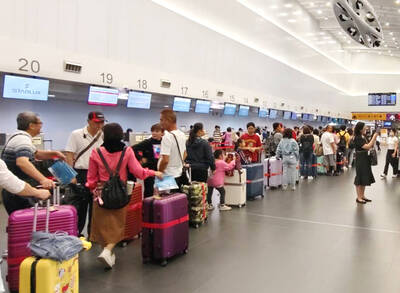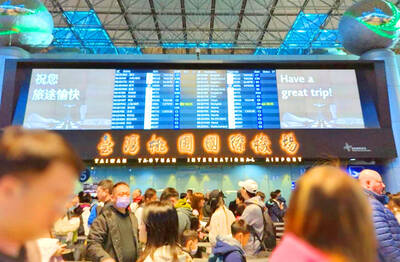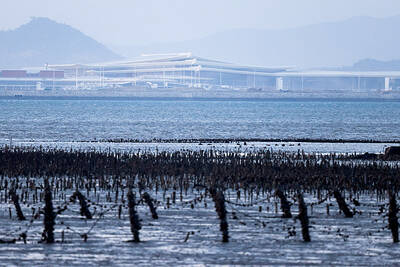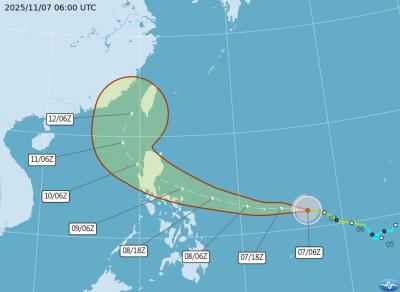The Ministry of Transportation and Communications is proposing to offer an additional NT$25 billion (US$878.73 million) in loans to business operators in the aviation industry as the nation’s borders remain virtually closed due to the COVID-19 pandemic.
Minister of Transportation and Communications Lin Chia-lung (林佳龍) yesterday announced the plan in his opening address at a forum on the development of the logistics industry in the post-pandemic era.
In April, the ministry secured NT$50 billion to offer airlines, ground handling service operators and catering providers for airlines as loans or interest subsidies.
Asked about the new plan, Lin told reporters that the fund would provide loans to operators in the aviation industry, as their businesses are expected to continue to suffer next year because of the pandemic.
The ministry proposed the plan to the Executive Yuan last week, he said.
The ministry is also proposing to extend the subsidy program to compensate salaries of workers at international airports until the first half of next year, he said.
Lin said that part of the funding for the new plan would come from the ministry, while the rest would come from interdepartmental funding allocated through the relief fund packages.
“We hope to coordinate with other government agencies on this matter, as some of them have yet to use up relief funds in certain categories that were allocated to them through the Executive Yuan’s relief fund packages,” Lin said.
Ministry officials said that the NT$50 billion package for the aviation industry has nearly been depleted.
As the government has yet to lift restrictions at the nation’s borders and international flight carriers are still sustaining financial losses, the ministry proposed the additional NT$25 billion in loans, they said.
Aviation business operators could start filing applications for loans once the Executive Yuan approves the ministry’s proposal, they said, adding that their applications would be subject to review by the ministry and the Small and Medium Enterprise Credit Guarantee Fund of Taiwan.
Lin also said that a trade dispute between the US and China over the past two years has caused many high-tech companies to relocate supply chains outside of China to spread their risks.
As global supply chains are reshuffling, Taiwan could use the opportunity to develop the high value-added processing industry, he said.
“We can use the aviation network and free-trade zone at Taiwan Taoyuan International Airport, the broad hinterland at the Port of Taipei and Chunghwa Post’s express deliveries to attract investments from some key component manufacturers and create new supply chains,” Lin said.
“We have identified the cross-border e-commerce service, cargo delivery combining air and sea transport services and cold-chain technology as having the most potential for development in the nation,” he added.
Lin said that the ministry plans to allocate NT$1.9 billion to address traffic congestion at the Linkou (林口) Interchange on Sun Yat-Sen Freeway (Freeway No. 1), which is the main route to the Chunghwa Post Logistics Park.

Three Taiwanese airlines have prohibited passengers from packing Bluetooth earbuds and their charger cases in checked luggage. EVA Air and Uni Air said that Bluetooth earbuds and charger cases are categorized as portable electronic devices, which should be switched off if they are placed in checked luggage based on international aviation safety regulations. They must not be in standby or sleep mode. However, as charging would continue when earbuds are placed in the charger cases, which would contravene international aviation regulations, their cases must be carried as hand luggage, they said. Tigerair Taiwan said that earbud charger cases are equipped

Foreign travelers entering Taiwan on a short layover via Taiwan Taoyuan International Airport are receiving NT$600 gift vouchers from yesterday, the Tourism Administration said, adding that it hopes the incentive would boost tourism consumption at the airport. The program, which allows travelers holding non-Taiwan passports who enter the country during a layover of up to 24 hours to claim a voucher, aims to promote attractions at the airport, the agency said in a statement on Friday. To participate, travelers must sign up on the campaign Web site, the agency said. They can then present their passport and boarding pass for their connecting international

UNILATERAL MOVES: Officials have raised concerns that Beijing could try to exert economic control over Kinmen in a key development plan next year The Civil Aviation Administration (CAA) yesterday said that China has so far failed to provide any information about a new airport expected to open next year that is less than 10km from a Taiwanese airport, raising flight safety concerns. Xiamen Xiangan International Airport is only about 3km at its closest point from the islands in Kinmen County — the scene of on-off fighting during the Cold War — and construction work can be seen and heard clearly from the Taiwan side. In a written statement sent to Reuters, the CAA said that airports close to each other need detailed advanced

Tropical Storm Fung-Wong would likely strengthen into a typhoon later today as it continues moving westward across the Pacific before heading in Taiwan’s direction next week, the Central Weather Administration (CWA) said. As of 8am, Fung-Wong was about 2,190km east-southeast of Cape Oluanpi (鵝鑾鼻), Taiwan’s southernmost point, moving westward at 25kph and possibly accelerating to 31kph, CWA data showed. The tropical storm is currently over waters east of the Philippines and still far from Taiwan, CWA forecaster Tseng Chao-cheng (曾昭誠) said, adding that it could likely strengthen into a typhoon later in the day. It is forecast to reach the South China Sea